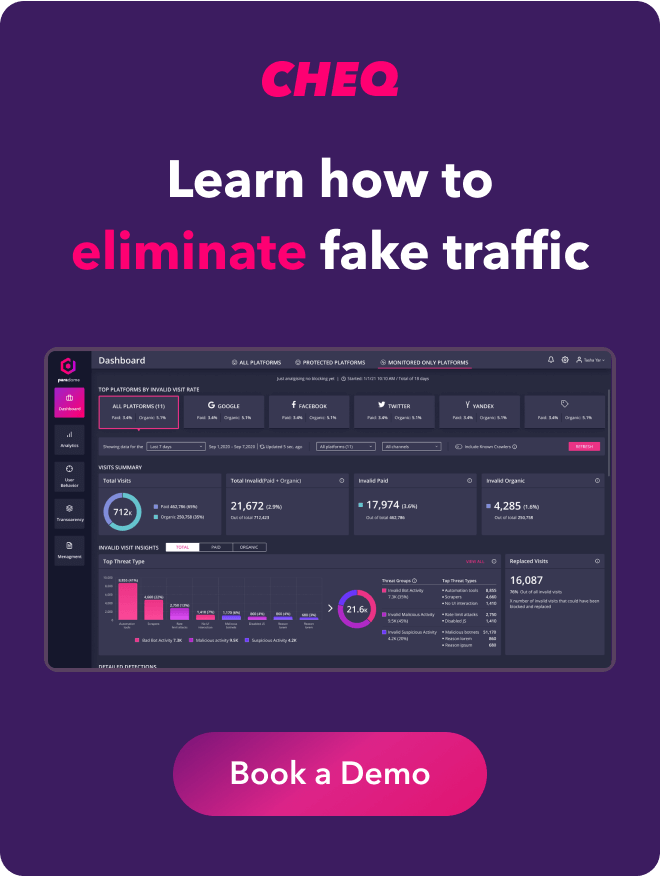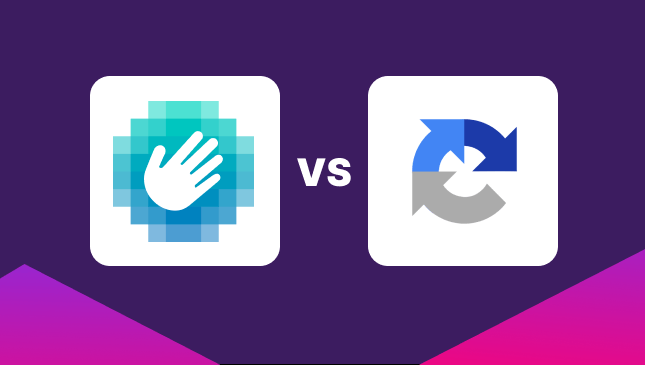5 Best Practices When Conducting a Cybersecurity Audit
CHEQ
|Website Ops & Security | October 02, 2023

Whether you fear potential data breaches or have experienced one that you wish to safeguard yourself against in the future, following a set of best practices will allow you to take a methodical approach.
Fundamentally, this undertaking is an in-depth evaluation of your digital infrastructure, identifying vulnerabilities and implementing solutions. Coming into this, you may be a novice or already have a background in a related field.
Either way, this article serves to help structure your thoughts and actions in a way that reduces the chances of missing anything important during your cybersecurity audit. First, let’s define this process so we have a shared definition of the starting place.
Cybersecurity audit defined
Before conducting the audit, it is important to briefly define what the audit is, the types available, and how it differs from risk assessment and penetration testing.
For example, you might not need a comprehensive cybersecurity audit if you have suspicions about data leaks. You could begin to monitor phone calls so that there is a record from which future verbal leaks can be more effectively identified.
But in more complex cases, a full audit might be necessary.
Types of audits
Audits can be conducted either in-house (internal) or by a third party (external):
- Internal: When you have the capacity, resources, and knowledge to conduct the audit in-house.
- External: When a third-party specialist is brought in from outside of the organization, perhaps in the form of a secure remote support specialist. If you lack the skills or resources, they can provide an unbiased and technical set of skills.
Audit vs. risk assessment vs. penetration test
A Cybersecurity Audit is essentially an examination to ensure an organization’s cybersecurity measures align with a particular set of standards. The goal is to reveal a gap analysis from which a measurement can be taken against the benchmarked standards.
A Cybersecurity Risk Assessment is a process to identify and prioritize potential threats and vulnerabilities, producing a list of risks in order of priority coupled with a set of suggested solutions. Unlike an audit, a risk assessment allows for more freedom to check for any potential threats. While more comprehensive, it can become too in-depth and start to identify issues that are not pre-prioritized.
Lastly, a Cybersecurity Penetration Test is a simulated cyberattack to discover and exploit vulnerabilities in systems, culminating in a detailed report of found vulnerabilities and advice for their elimination. If the issues are already known, then this is likely a preferable starting place over the audit. However, it may miss issues that might have otherwise been identified in either of the previous two approaches, such as how fraudsters use bots to bypass your security systems.
At this stage, if you have decided that the audit is still the right approach to solve your cybersecurity threats, then it’s important to briefly identify the categories of threats that exist. Once you have determined what these are for your particular context, you can select these as the predetermined standards against which to measure the best practices.
Categories of threat
The following briefly defined threats can be identified within the Situational Analysis. However, because the audit is defined by its measurement against pre-existing factors, the following might help you to define the issues you have already faced or issues you fear facing due to the likeness of their occurrence in your industry:
- Zero-Day Exploitations: Attacks exploiting unnoticed security flaws.
- BYOD: Risks associated with personal devices employees bring to work.
- Password Theft: Stolen or guessed passwords leading to unauthorized access.
- Social Engineering: Tricking employees via calls, texts, and fake websites.
- DDoS: Overloading systems with fake traffic, blocking real users.
- SQL Injections: Altering database requests to steal information.
- Malware infections: Harmful software that can hide or damage systems.
Learning more about how to pick the best API gateway for a higher degree of secure connectivity can assist with multiple issues relating to apps that are interlinked via an internet connection, which covers multiple bases.
Now that a shared definition of the audit has been established, let’s focus on the best practices to follow to tackle these issues head-on.
The 5 best practices to conduct a cybersecurity audit:
1. Situational analysis and scope
From tactics to block bots to secure your data to securing an entire network, you begin by assessing the situation to discover which issues should be tackled in which order.
With the categories of threat being identified in advance, this section will not be as involved as it would be in a Risk Assessment. However, this is the time to get feedback from stakeholders on issues relating to regulatory compliance. You’ll need to comply with both industry and location-specific data security policies, as well as any internal policies from your organization.
A security gap analysis can then be undertaken. If a company’s goal is to meet a security standard (like ISO 27001) but misses certain requirements, the gap analysis highlights those missed shots, showing where improvements are needed to achieve full compliance with that standard.
Threat Identification is a set of specific standards that a company might wish to protect itself against, but standardized templates such as the ISO 27001 are a general baseline framework to inform the gap analysis between what systems you have in place to mitigate risks and where vulnerabilities still exist.
2. Objectives
The objectives should be SMART and include specifics on the best tools (strategy) for the job. This section can be revisited to fill in any blanks after the strategy and tactics section is fully fleshed out.
For example, if your gap analysis has identified fraud as a primary issue, your main goal now might be to contact fraud protection services for assistance.
3. Strategy and tactics
The table below outlines the best tools and strategies to leverage when dealing with specific threats:
| THREATS | TOOLS |
| Zero-Day Exploitations | Immunity Debugger can help identify flaws in code which might be exploited in a zero-day attack. Metasploit and Nessus are also valuable for uncovering vulnerabilities that could be leveraged in these attacks. |
| BYOD | Wireshark can help to analyze traffic coming from these networks to detect suspicious activity. Secure virtual fax environments are another countermeasure. |
| Password Theft | Hydra and John the Ripper are password-cracking tools that demonstrate the strengths and weaknesses of passwords. |
| Social Engineering | This threat is more about human behavior, so while tools like Wireshark can help detect anomalous traffic, regular training and awareness are the best countermeasures. |
| DDoS | Nmap can be useful for identifying unexpected hosts or services that might be part of this attack. |
| SQL Injections | SQLMAP specializes in automation and the exploitation of SQL injection vulnerabilities to interject before they can take hold. |
| Malware infections | Metasploit and Nessus can be used to test for system vulnerabilities that might be exploited by malware attacks. |
The above list contains fairly broad categories of threats. Naturally, each industry might be faced with more specific ones – such as a digital marketing agency preventing Google Ads click fraud or an eCommerce business needing to secure its online payment systems from hackers.
4. Actions
Now it’s a matter of prioritizing which threats pose the greatest risk and counteracting these first. Prioritize these tasks with a GANTT chart so that they can be allocated with expected time frames for completion, followed by the next issues on the list and all the way down to the least critical one.
Vonage cloud phone system for small businesses, for instance, might prove to be a useful tool to delegate tasks to remote and international teammates at a price that is competitive with alternatives.
It’s also crucial to involve your back-end team in this process to ensure that the necessary technical measures are implemented effectively.
5. Quality control
The final best practice is the ongoing analysis of results; preferably, these are intermittently scheduled on an ongoing basis.
Additionally, it’s essential to stay vigilant against evolving threats. Understanding what you need to know to shield your business from ransomware is crucial in today’s cybersecurity landscape.
Have risks fallen or increased since implementing cybersecurity tools and assistance? Are more people using your website to complete sensitive financial transactions with no issues? Identify which areas need further improvement and change the tool or strategy accordingly until threats are contained to a level that is reasonable to your standards.
The cybersecurity audit: Key takeaways
Getting started with a cybersecurity audit can be daunting, but it doesn’t need to be. By knowing what the main threats are, which tools and strategies are best to tackle each issue, and by performing regular quality control checks, you’ll be all set to protect your organization from cyber attackers.
Remember to identify your goals, establish a clear set of priorities, and keep your entire team in the loop. Good luck with this undertaking. Take it step by step, and it will all come together.














